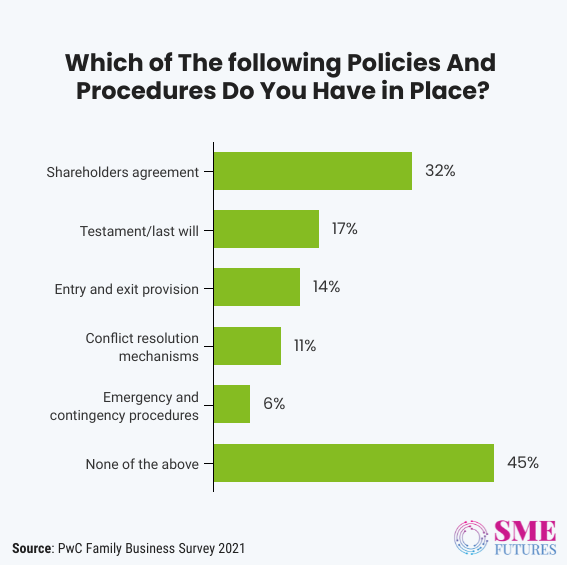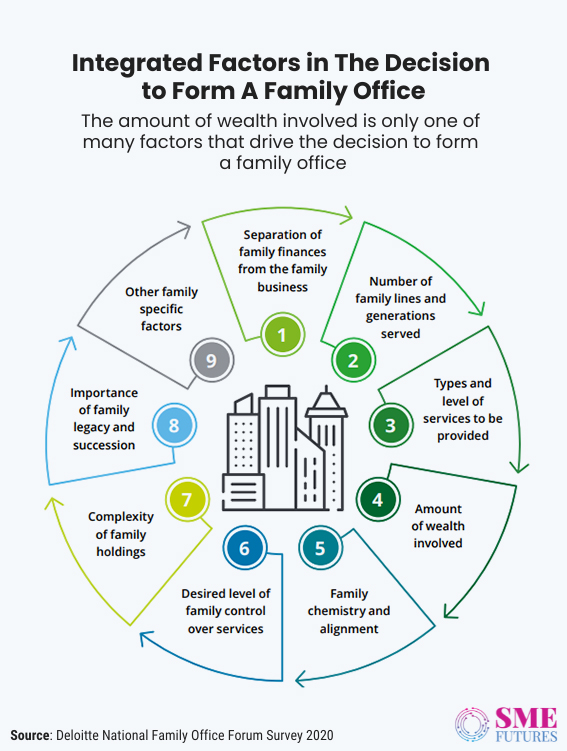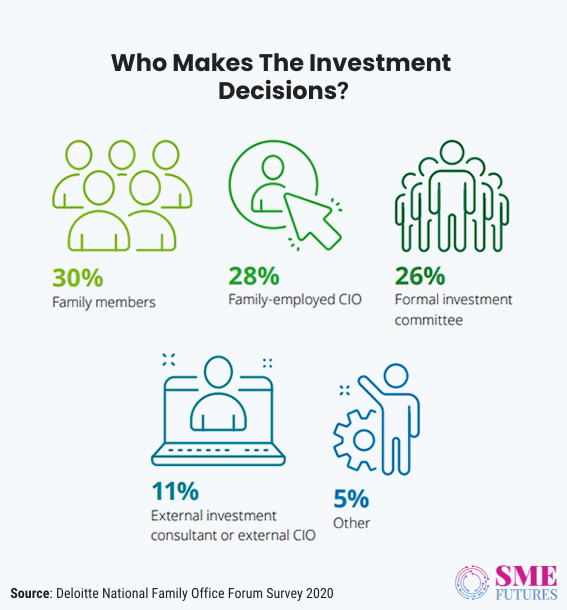In our previous story, we looked inside six family-owned businesses in India and learned about their transformation stories. Adapting well to change was the one thing that they all had in common, and it was a major contributor towards their success. Also, family firms in India have always revolved around the concept of building generational wealth using the brick-and-mortar methods of business.
But family-owned businesses are far more complex than that.
As they involve personal relationships. Given the nature of the rapport on which they are built, they can act and adapt quickly when faced with change or they can slow things down and stifle decision-making.
Let’s take the instance of a family-owned manufacturing business. Once the managing director of the manufacturing company reassigned a close relative of his, a plant supervisor to two facilities at two distinct and distant locations within a two-year period.
But soon, problems started to arise. The latter factory was sold, resulting in the transfer of the said plant supervisor to a position of less responsibility—which did not bode well within the family. Even years later after this incident, the family dynamics remained strained.
This example indicates that the family members were unable to accept change well, leading to the conflicts between them.
But this often happens in family-owned enterprises, explains Darsh Golechha, Founder at Monech, a firm that provides legacy planning services to Indian firms with the help of technology.
Dealing with many family-owned business firms as clients, Golechha has a lot of experience consulting family members who are dealing with such challenges. “While interacting with family-owned businesses I have observed a set of challenges. These are a lack of 21st century knowledge, a tendency to go back to old habits fast, an aversion to change and slow decision making hampering growth,” he tells us.
The three issues
“But there are three key challenges that Indian family firms face,” he continues.
These challenges are— Adapting to the new culture while keeping the old values intact; trust among family members; and adopting a non-immediate family member or a third party as a successor.
“Bajaj is a great example of a successful family-owned business, which surpassed the first challenge,” Golechha remarks. “They have adapted to the new culture, and they have led this change in their family business and have carried forward their principles and core values to the next generation,” he says.
Non-stereotypical decision making combined with independent advisors to better understand the perspective on matters internal and external is the solution to this challenge, suggests Goleccha, if one wants to bypass the very first challenge.
Then comes trust amongst family members, which can be challenging if conflicts are already there.
“Splitting assets and doing the entire documentation and the legal structure set up is something that family-owned businesses struggle with as there is a lot of personal and professional conflict of interest. Here is where the necessity of unbiased professionals like us comes into the picture as we take care of all the necessary formalities,” he explains.
The third key issue is of choosing a successor. “This is a task altogether. Skills and qualifications impact decision making in businesses in the 21st century, which creates a void of trust between family members and the appointed successor. A properly documented transition journey with defined roles and responsibilities amongst family members is a necessity in this case to ensure a frictionless journey,” elaborates Goleccha.
The three imperative changes
PwC, a consulting firm, surveyed 84 family-owned businesses and came up with some interesting results. When asked about the various policies and procedures that they have in place, this is how they responded—

According to the PwC survey, 70 per cent of family-owned firms reported that the family members communicate about the business on a regular basis, but nearly half of the respondents (45 per cent) say that they have no formal mechanisms in place to deal with potential areas of disagreement.
At the same time, PwC states that 55 per cent of family-owned businesses have some form of governance policy or procedure in place – down from 88 per cent when they asked the same question in 2019 – but for many, there are significant gaps.
These findings highlight how vulnerable our Indian family-owned enterprises are.
There are numerous sensitive issues to discuss, yet in many areas progress is falling short—majorly towards incorporating change management principles into their managements.
Out of these, the three most critical ones are—succession planning, family offices, and the procedures to be followed during mergers & acquisitions or the sale of the business.
Despite being difficult to implement, the experts and the business families that we spoke with unanimously agreed that these are the critical and imperative procedures that need to be implemented in today’s business environment.
Documenting succession planning
In layman’s terms, succession planning is the process of identifying and developing the future leaders of a company. This strategy ensures that the organisation continues to function smoothly after key personnel leave their positions, retire, or die.
Consider this, only an average of 34 per cent of the top 500 family-owned businesses in India have their successor chosen, with only 11 per cent having a robust and documented succession plan. The urgency for a clear handover path as transition takes place is greater here than in other parts of the world.
Interestingly this trend is gradually picking up, as family firms now understand the significance of having a succession planning strategy in place.
Every business should have a succession plan in place, says Dinesh Jain, founder at Insight Cosmetics.
“While every business starts with family traditions and values, there comes a time when it grows vast enough to decentralise specific tasks and processes to include current processes and procedures. Sometimes it is better for the organisation if a well-seasoned professional manages specific tasks and departments. While it might be a family-owned business, it is crucial to follow proper corporate protocols when it comes to the business. A rule book that stays true to everyone, family members or otherwise should be adhered to. The governance should be system driven and not human-driven,” he says while elaborating on the importance of a succession plan.
It’s crucial, say the family-owned firms
Having been a successful family-owned business for over four decades now, Dollar Industries, where three generations are at the helm of affairs currently, has a well-defined and planned-out succession roadmap for the next generation.
Vinod Kumar Gupta, it’s MD states, “At Dollar, we have always encouraged the younger generation to choose a career path that is best suited to their capabilities and interests. However, while joining the family business, the senior management ensures that the next generation is well educated about their roles and can lead the brand’s growth and profit.”
Similarly, when it comes to succession planning, Madame, an apparel brand and a family-owned business has a family protocol in place.
The company’s Executive Director, Akhil Jain, tells us about this tradition. “We have agreed upon this family protocol where once someone reaches the age of 55, they take up the responsibilities of governance while the responsibility of managing the operations passes on to the next generation. This way, we always have the much-needed support from our senior members while we continue to bring fresh zeal into how we run our business,” he explains.
Talking about succession planning, second-generation entrepreneur Aakansha Bhargava, CEO of PMR, a family-owned business in the relocation sector believes that it helps to strengthen family bonds and enables open and transparent communication.
“Succession planning is crucial for the smooth functioning of the business in the longer term. Currently, my father and mother are still actively involved in the business, and we have a well thought succession plan in place to ensure a smooth transition,” she weighs in.
At the same time, the advent of COVID-19 appears to have compelled many people to seriously think about this factor.
The PwC survey confirms that 20 per cent of family-owned businesses now have a formal succession plan, and only 7 per cent of Indian family-owned businesses revised their succession plans in the light of COVID-19.
Goleccha tells us about what has been trending in this arena. According to him during succession planning, families are focused on how the business will look post succession.
“Metrics such as work culture, principles, values, beliefs and company positioning are also being considered in addition to financial growth, expansion, etc. Planning is more holistic, more focused on building the building blocks for the next generation as individuals. Families have realised that it is a people’s game, and they need to evolve to ensure growth,” he discloses.
Family businesses see M&A and sales differently
“What will our great grandfather think? The business is in his name!”
The toughest time in any business arrives when its either time to sell it or bring in an external investor. One generation has to decide on the future of a legacy which has been created over decades.
According to consulting professionals with extensive experience working with family-owned businesses, family businesses view mergers and acquisitions differently than other types of firms do, making their approach to the process unique.
“A wrong decision or even a wrong perception and it’s easy to be judged. In addition to this there are the obvious questions pertaining to the valuation of the business (legacy), terms and conditions, the perceived outlook of the business from a potential investor. Generally, it is assumed that a family business will not have the standards of corporate governance and the systems and processes that are found in a professionally run business entity,” says Ashutosh Kharangate, Founder & Managing Director of MARC, a market research, analytics and business advisory company.
Thus, its critical for business owners and advisors to understand how to handle M&As and incorporate the right changes in their policies to properly plan their execution. Another important consideration is that families are deeply involved in their companies. This attachment is not only emotional, but also there for monetary reasons.
When discussing what goes on behind the scenes during a sale or mergers and acquisitions in a family-owned business, Kharangate shares some insights based on a real-life example.
“A family needed our assistance in finalising a fair value, negotiating the same, helping during the due diligence and negotiating and finalising the agreements of the sale. It was a critical moment for them. They were giving up on a business run by generations and needed to be sure it was the right decision and was worth it. We felt for the family,” he says.
Kharangate’s firm spent time understanding the expectations of the family.
“Only after we felt that we had understood the pulse well, did we move ahead. We assessed the broad contours of the deal. What was negotiable and not from the point of view of the family. We proceeded to work out the valuations. We got a buy-in from the family. It is an emotional moment and there could be several conflicting thoughts. It is important to give them time and space. Post the finalisation of the term sheet we prepared ourselves to face the due diligence process,” he recounts.
But the process is quite challenging as well for the firm involved as the third party.
Kharangate tells us, “Sometimes it’s tough to make a professional investor/advisor understand the nuances of a family-owned business. We were worried that they may point out some system limitations and cast aspersions on the numbers reported to eventually attempt to reduce the valuations. Post this what followed was a strenuous exercise of agreement drafting and finalisation. Once we felt that the draft of the agreement was more acceptable, we shared it with the family. Some typical issues that arise in family-owned businesses when it comes to finalising a deal are matters like the continuance of the business name, the future involvement of the family in the business etc. These have to be handled well.”
Finally, it was about communication to the outside world. In family businesses, perceptions can make or break a business.
“Hence, we held a press conference and organized a small event to explain the sequence of events that led to the eventual sale. M&A in family businesses is a lot about handling emotions. Expectations have to be understood and set right to avoid heart burn at any stage. They need to be assured that their baby will be well taken care of, and the sacrifice is worth it!” he adds.
At the same time, according to an experienced M&A intermediary, a common mistake made by family-owned businesses is failing to plan their transactions ahead of time. Whether it’s an acquisition, a recapitalization, or even their own sale to make room for retirement, the demands of running a business frequently outweigh the need to plan.
However, due to the far-reaching economic effects that transactions can have on a family, planning is essential.
Establishing family offices
When significant wealth is created, new worlds open up for high-net-worth individuals and their families. As the family adjusts to the increased complexities of wealth, new opportunities and challenges may arise. Establishing a family office, or modernising an existing one, to oversee the family’s financial affairs, rather than relying on financial institutions, may be an important decision.
In a nutshell, a family office is a private organisation established by a family to oversee, directly or indirectly, the financial affairs of the family. They provide a formal structure for the management and governance of the family’s wealth. And also promote the family’s legacy, vision and values.
In the current scenario, the family led enterprises have started to take interest in investment decisions. While capital market uncertainty, investment fraud, and cybercrime are some more factors that have led to the inception of family offices.
According to a Deloitte whitepaper, the family office industry believes that a family run enterprise might need at least $100 million of investable assets to form a family office. But the amount of wealth is not the only important factor here. There are more, as the chart below shows.

One interesting fact about family offices is that this concept came from America.
According to the Deloitte report, the estimated number of family offices in the US may be 6,000-7,000. But, in India the number is too small—approximately 200, estimates an Edelweiss financial service and Campden family connect report. This number suggests that the concept of a family office is an untouched territory for most family-owned businesses in India.
Advocating the importance of family offices, Jain of Insight’s Cosmetics feels that it’s crucial to have someone with expansive knowledge about how to manage financial discussions and sufficient knowledge about the industry and the trends in this sector.
“While we have not outsourced our financial planning and family office management to help with our budgetary decision making, we have experts and consultants who guide us when we need to make critical decisions regarding the business,” he tells us.
Meanwhile, PMR’s Bhargava does not have a family office setup, but she knows how to invest her wealth in different asset classes. “We are not a family office and do not look after wealth management. Currently we have just invested in an upcoming kids’ furniture company called ikOOji,” she says.
Another aspect of family offices is that how the family wealth is invested defines the family office. And, while business families have many advisors to help them make investment decisions, the family members or Chief Financial Officers (CFOs) are the ones who make these decisions.

Next generation entrepreneurs crave motivation
PwC in its 2019 survey, found out that one-fourth (31 per cent) of family-owned businesses expected their next generation family members to become majority shareholders within five years.
In the latest 2021 survey, this expectation has doubled. Now half (50 per cent) of first-generation Indian family-owned businesses expect to pass on management to the younger generation in five years’ time.
However, the younger generations are quite often choosing other career options rather going into the family business. Experts suggest that they crave meaning and purpose when it comes to their careers, and sometimes struggle to find these qualities in their family businesses. Clear company values can help to bridge the generational gap and give the next in lines the sense of purpose that they want. Family-owned businesses with values that are clearly written down are also better prepared for succession and are more communicative and transparent.
Goleccha opines that over the years there has been a fine growth in this trend. “Trust amongst first- and second-generation entrepreneurs is now higher due to the wider generation gap and there is a need for the family-owned business’s senior management to upskill themselves and update themselves consciously. There is a change in attitude towards digitisation as many now consider it a necessity to grow. In fact, companies have started documenting their legacies, their plans, and the steps that are to be taken in the case of an emergency,” he says.
Finally, there is no doubt that these three principles or strategies that are being employed by family led enterprises are the critical pillars that uphold them in today’s volatile business environment. If we go by the recommendations of industry experts, it’s best for them to address the sensitive issues decisively to avoid upsetting family dynamics and to successfully overcome the three challenges that have been mentioned in this piece. And finding professional support to achieve this can be a great idea and a step in the right direction.











